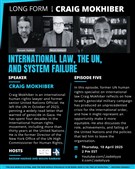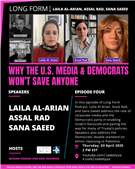From 22-24 March 2013 the Center for Gulf Studies (CGS) at the American University of Kuwait held a three-day Gulf Studies Symposium on the theme "Gulf Cities: Space, Society, Culture." The symposium brought together forty regional and international scholars from diverse disciplinary backgrounds to share their research on the cities of the extended Gulf (including Iran, Iraq, Yemen, and the Red Sea region of Saudi Arabia). Though the rapidly developing Arab Gulf cities have become hot topics in both academic and popular discourse in recent years, the objective of this symposium was to foster a more critical and in-depth discussion on this highly urbanized region – one that scratched well below the surface of the mega-projects and superlative architectural masterpieces that dominate the region’s booming skylines.
The panels and presentations covered diverse topics – transnational migration, political economy, oppositional politics, social change, art, museums and theater, education – in all of which the city and urban space served as the referents for understanding how the Gulf functions and has changed over time. The papers showed that different actors and agents of city formation exist beyond simply state institutions, developers, and architects. Artists, political protestors, and city residents all play important roles in shaping Gulf cities in ways that are starkly different from those presented in master plans and envisioned by so-called “starchitects.”
Click here to access the full program of the symposium.
The following report on the symposium was written and published by the Center for Gulf Studies:
From 22-24 March 2013 the Center for Gulf Studies at the American University of Kuwait held a three-day Gulf Studies Symposium on the theme "Gulf Cities: Space, Society, Culture." According to the Director of the CGS, Dr. Farah Al-Nakib, in her opening remarks: "The Gulf region ranks among the most urbanized in the world, with an average of 84% of the population living in urban areas (which increases to 91% when excluding Saudi Arabia, Iraq, and Iran). Furthermore, the cities of the Arab Gulf coast are currently setting global benchmarks in urban growth rates and city development projects. Given this distinctly urban identity, almost every aspect of Gulf society, culture, and politics can be analyzed and understood through the lens of the city." The objective of the GSS was to analyze Gulf cities from both their historic and present-day perspectives, and to include cities in areas historically, geographically, and culturally connected to the Arab Gulf coastal region: Iran, Iraq, Yemen, and the Red Sea region of Saudi Arabia.
The three-day symposium brought together a total of forty leading scholars from Kuwait, the Gulf and Middle East, Europe, the United Kingdom, and the United States to present current and innovative research on the space, society, and culture of Gulf cities. The opening keynote speech was given by Dr. Nelida Fuccaro from the School of Oriental and African Studies at the University of London, a pioneering historian of Gulf cities and author of the book City and State in the Persian Gulf: Manama Since 1800. Dr. Fuccaro analyzed the growth of the field of Gulf urban studies over the past several years, and argued that the burgeoning research on Gulf cities (as demonstrated by the high level of interest and participation in AUK`s inaugural Gulf Studies Symposium on the subject) is helping to overturn the assumption that the rapidly-developing cities of this region are exceptional places that are difficult to understand or research. Dr. Fuccaro`s assessment of the increasing maturity of this particular research field was confirmed during the next three days. Over the course of ten panels (consisting of two to four paper presentations each), two roundtable discussions (with two presentations each), and two special presentations, historians, anthropologists, political scientists, economists, architects, and other scholars engaged in a vibrant and rigorous interdisciplinary discussion on diverse issues related to urbanism and urbanization in the Gulf and Arabian peninsula.
The unique feature of this symposium was that it was interdisciplinary. The panels did not simply examine urbanization in the Gulf from a spatial or architectural perspective, but rather analyzed the production, use, and transformation of space in the Gulf from the pre-oil period until today in relation to various social, political, and cultural dynamics. The symposium covered many diverse topics-transnational migration, political economy, oppositional politics, social change, art, museums and theater, education-in all of which the city and urban space served as the referents for understanding how the Gulf functions and has changed over time. The papers showed that different actors and agents of city formation exist beyond simply state institutions, developers, and architects; artists, political protestors, and city residents all play important roles in shaping Gulf cities in ways that are starkly different from those presented in master plans. The various panel presentations and discussions gave Gulf cities the analytical depth they deserve by scratching below the surface of the region`s spectacular new architectural projects and analyzing the social, political, and economic strategies and motivations that drive the regions fast-paced urbanization, and the ways in which the people who live in these cities (nationals and non-nationals) negotiate and/or transgress these strategies.
The first session on "Gulf Cities" included three panels: "Gulf Cities in History" highlighted the international significance of Gulf port cities before oil, "The Politics of Urban Development" analyzed the various political and economic structures, agents, and technologies of power that underpin the planning and development of Gulf cities, and "The `Other` City" considered the recent transformations of cities that were relatively excluded from major state-led oil modernization processes, and their changing relationships with neighboring cities. The second session on "Space" consisted of three panels: "Spaces of Higher Education" examined the role of the college campus in the Gulf as both a social space of everyday experience and as a globalized space of transnational labor migration, "Making and Using Public Space" examined the creation, use, and management of urban spaces regularly considered "public" (namely parks, streets, and squares), and "Rethinking Residential Spaces" examined the social experiences and relationships engendered by the architecture, planning, and governance of neighborhoods (historic inner-city districts, modern suburbs, and gated compounds).
The two panels that made up the third session on "Society" dealt with "Strategies of Urban Control," which investigated the use of space in state strategies aimed at governing and controlling urban populations and the social relations and experiences produced by these spatial tactics, and "Artistic Practices in the City," which analyzed how artistic practices in the city counteract prominent narratives of sectarianism in Gulf societies and express political dissent, and how states incorporate works of art into official strategies of urban reconstruction. The last two panels in the session on "Culture" were on "Cultural Strategies of Urban Development" which examined the production of large-scale cultural projects like museums, theaters, and art galleries designed by "starchitects" for global audiences and its implications for local societies and regional dynamics, and "Official vs. Popular Identity Construction in Heritage," which explored the tensions between dominant/state constructions of national identity and tradition as expressed in museums and sites of cultural heritage, and more popular experiences and interpretations of social belonging/exclusion.
The Gulf Studies Symposium also consisted of two roundtable discussions. The first was on "The `Image-ability` of Gulf Cities," which addressed the role of the "image" in the making of modern Gulf cities in relation to issues of identity formation, city branding, and spectacular architecture. The second was on "Exporting the Gulf Urban Model," which addressed the diffusion of Gulf urbanity (commonly known as the "Dubai model") on other Arab cities (specifically in Egypt and Yemen). There were also two special presentations given: one by Dr. Robert Carter on an archaeological project currently based in Qatar on "The Origins of the Gulf Towns," and the other by Dr. Marjorie Kelly on "Public Art in the Gulf," which was accompanied by a photo exhibition.
The symposium on "Gulf Cities" was closed with a concluding speech by Dr. Al-Nakib, in which she argued that Gulf cities, though experiencing a period of rapid growth and expansion, are in a state of urban crisis. Gulf societies` historic urban identity was defined by their cosmopolitanism, openness to difference, and tolerance of foreigners. Gulf societies today, however, are more exclusive, divided, and intolerant of outsiders and difference. She associated this with their estrangement from city-living over the past half century with the move to the suburbs, and the segregation of people of different backgrounds into separate residential areas and the division of daily functions (work, residence, leisure) into separate zones. She argued that the city is the place where people truly learn how to live with and be more accepting of difference. Dr. Al-Nakib concluded that in the Gulf a restoration of the right to the city and a more rich and diverse urban life-one where people are not segregated, and where work, residence, and leisure spaces are mixed, as in the pre-oil period-is vital for restoring the region`s historic urbanity.
The inaugural Gulf Studies Symposium was extremely successful. In addition to being well attended by members of the public, the event`s high academic caliber cultivated innovative scholarly discourse on the Gulf, fostered new research collaborations between top local and international scholars, and placed AUK in a leading position to help shape the research agenda on the Gulf region.
Dr. Al-Nakib would like to thank the following companies for their generous contributions to the 2013 Gulf Studies Symposium: Kuwait Projects Company - KIPCO (Holding), United Real Estate Company (lead contributor), Burgan Bank, and Gulf Insurance Group.
[The symposium report included in this post was originally publised on the Gulf Studies Center website.]
![[Poster for symposium on \"Gulf Cities: Space, Society, Culture\" ]](https://kms.jadaliyya.com/Images/357x383xo/gulfstudiessymp.jpg)










